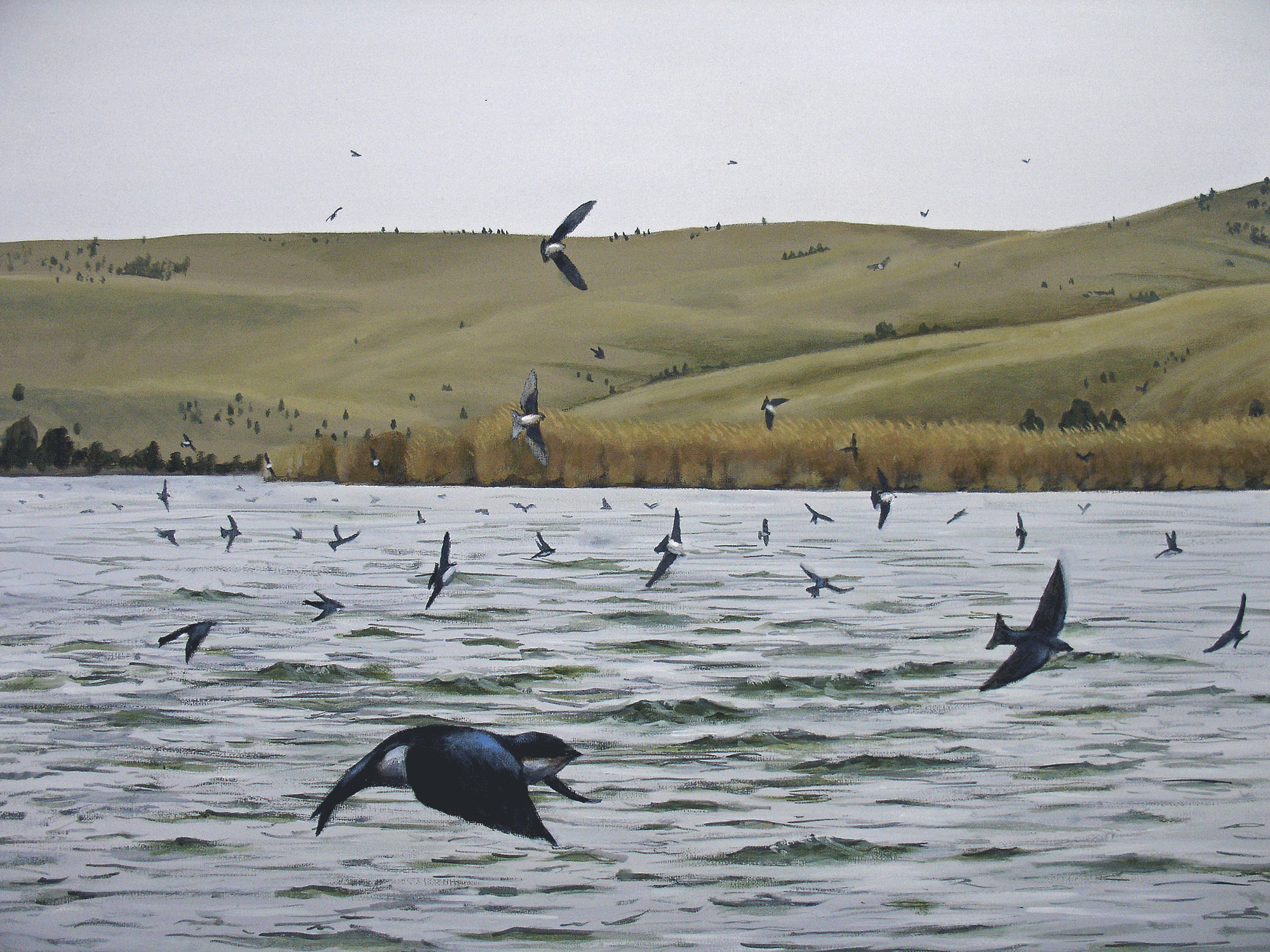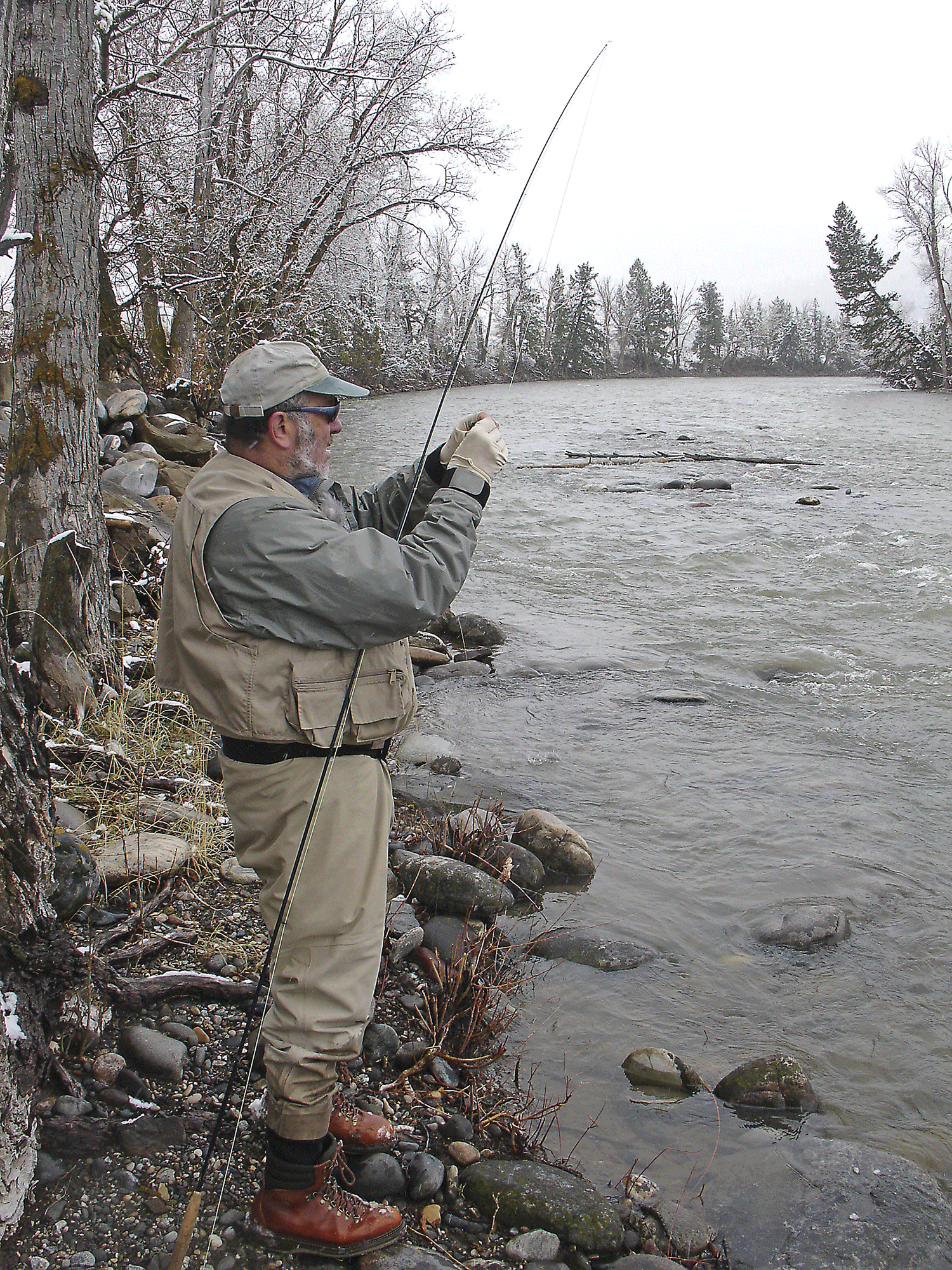
24 Oct Looking Into the Weather
Back in the 50s, Leslie Fiedler, the Missoula literary critic, wrote that the Montana face is made for looking into the weather. If that’s the case, then the faces of longtime Montanans are probably bipolar — especially during spring. In the morning, robins could be bobbing along on green grass or fluttering and chirping under a blue sky. But by afternoon, they might find it difficult to bob and chirp quite so much because they’re puffed up and huddled on the few green patches left after a blizzard. Yes, those of us who feel compelled to expose our Montana faces to spring weather must remain open to possibility.
For example, last April some colleagues at Montana State University in Bozeman asked me to take Irving Weissman fishing. Since Irv is primarily responsible for developing stem cell research and since he’s an MSU graduate, they had asked him to drop by to give a talk, and mid-April was the only time he could work this into his schedule. Also, come hell or high water, he wanted someone to take him fishing. The day before
his arrival, when I had checked out the Gallatin, the sun was out and the water was clear enough for Prince Nymphs to fool a dozen or so fat browns and rainbows; but, of course, when I took Irv to the same stretches, everything was getting pasted by wet snow that resembled chicken feathers, and the river looked like someone had laced it with Milk of Magnesia.
I didn’t say it, but I was thinking, You want hell and high water? as we slogged up the bank, the wet snow forming little bowling balls on the felt soles of our waders. After a soggy hour or so, I offered that the Madison might be clearer and the weather more temperate in that direction, so we packed up, headed west, and soon were descending toward the Norris bridge, clearer water and something that looked a little more like spring. Despite the sun and a modest hatch, the fish still weren’t interested.
I wasn’t going to burden Irv with the usual banter about why the fish weren’t biting, so I plopped down on a grassy bank and watched him futilely flog a riffle.
I was about to drift off when I felt something whistle over me so I sat up. It was a bank swallow. When I looked around, the air was thick with them, twittering and skimming the river for almost a mile, diving straight down and veering off at the last minute, doing crazy loops, spins and summersaults. I hadn’t known this much sheer happiness in months. Downstream through the birds, I could see Irv with his rod dangling by his side. I tried to yell something profound at him, but all that came out was “Birds!” For all the twittering, I couldn’t hear what Irv yelled back at me, but I think it was, “Birds!”
Yes, April, transitional month that it is, inevitably inspires a rapid succession of smiley-faces and frowney-faces among Montanans, but what about May. It’s supposed to be the proverbially and predictably merry month. Right? That’s what some friends and I were mumbling a few years ago (among a few dark expletives) as we sat in the Livingston Bar and Grille wondering if there was going to be anything resembling a Mother’s Day caddis hatch. Our gloom hovered around the fact that early May had dumped several inches of snow all over western Montana, snow that had melted into some monumental runoff. One of the local guides was just raising a glass to toast the advantages of drinking over fishing when someone burst through the door and said, “Get your butts out here and have a look at this.”
When we made it to the sidewalk the sky seemed strangely overcast and apocalyptic. Then we looked up and saw the caddisflies. I don’t mean a few little clumps of them. I mean clouds of them — like clouds that cast shadows on mountainsides. After a mad dash to the Yellowstone, we bore witness to an even more astounding spectacle. The flies weren’t just emerging from the river; they were covering the whole thing in a blanket several flies deep. Fishing was impossible but nobody seemed to care since there would obviously be plenty of plump, healthy trout for months to come. I was content to sit on the bank and watch bumps form in the blanket where trout gorged on the substrata.
If expectation in the Montana face has evolved according to the weather, the pattern might be along these lines: expect nothing; expect everything. If you go to the Madison in mid-May expecting to fish, the water will be funny, the fish won’t bite, and it will sleet on you. But when you dash through poison oak and rose hip brambles to the shelter of a big willow, you’ll discover that you’re sitting next to a thick patch of wild asparagus. If you’ve decided to hunt morels on the lower Gallatin because the water is too high and muddy to fish and find that someone has beaten you to your favorite patch, you might hurl yourself down on the bank in disgust only to notice a brown trout the size of a Dachshund sipping flies from the slack surface where a clear spring feeds in. If you get tired of cabin fever, put on your poncho and long johns and head to the Jefferson in a late-March snow storm, geared up with gaudy tarpon flies that a half-blind trout could see through the murk. The sun will come out and warm you to the extent that you’ll toss your gear aside, strip, lie down on a warm rock, and watch a couple of otters on a logjam fighting over a sucker against a backdrop of blue sky and white mountains.
In his original assessment, I doubt that Feidler was out to compliment the Montana face; in fact, I’m pretty sure he meant that it was so hardened from trying to eke out a living under extreme conditions that it had little time to contemplate the human condition and/or the scenery. Later, after a few years of spring in Montana, Feidler rewrote the essay and softened his position. In part, he probably realized that he had mistaken understatement for ignorance — stoicism for a lack of compassion.
I’m reminded of a weathered old ling fisherman I met when I stopped by the Atlas Bar in Columbus a couple of decades ago. He’d been up since four that spring morning on a Yellowstone backwater, keeping warm by the heat of a burning tire while he waited for the ling to move in. When I asked how he’d done, he said, “Not bad,” which probably meant he’d caught a mess of big ones.
As I was gently pressing him on the matter, the sunny afternoon outside suddenly turned into a raging storm of baseball-sized hail. Under the din of cars getting beaten to a pulp out on the street, he glanced toward the open door and said, “That’s a new one,” then returned to drinking his beer.





No Comments